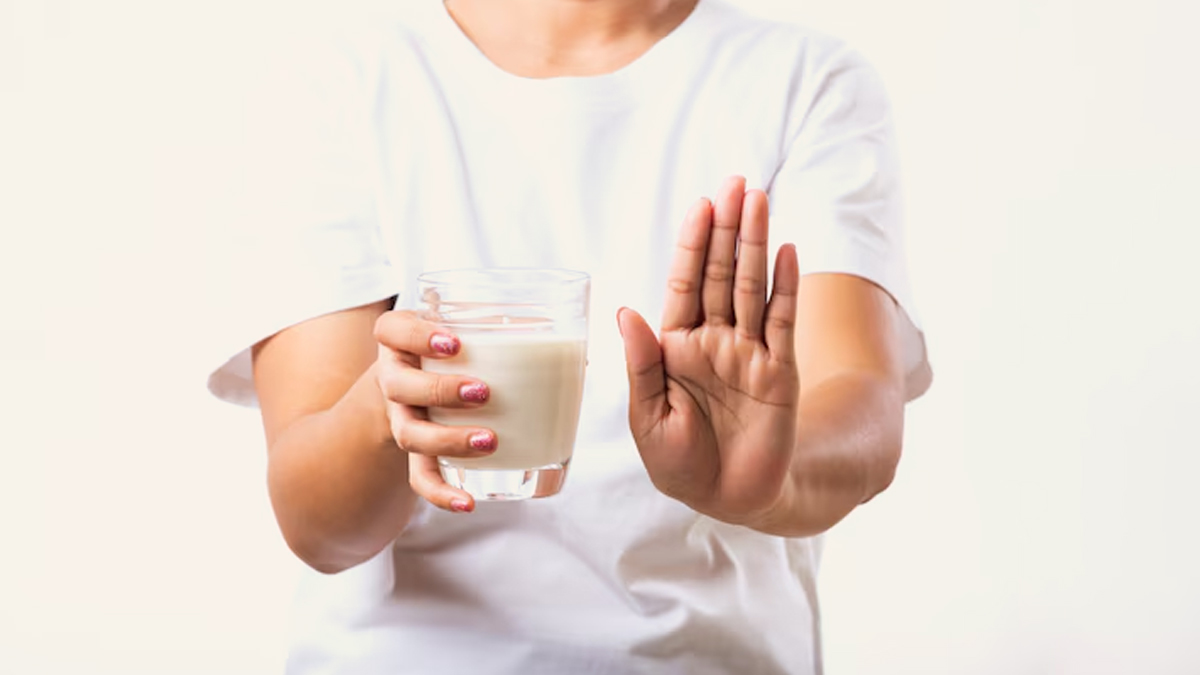
Are you one of those people who has an upset stomach right after having milk? Do you get bloated after consuming milk products? If that is the case, you’re not alone. Many people assume this is due to lactose intolerance, a common condition where the body struggles to digest lactose, the sugar found in dairy. But what if your issue isn’t sugar but fat?
Table of Content:-
Turns out, some people may actually be intolerant to the fat content in milk, a lesser-known condition often overlooked. We spoke to Dr GS Sameer Kumar, Consultant Medical Gastroenterologist, Hepatologist, and Interventional Endoscopist, Gleneagles Hospital, Hyderabad, to understand how milk fat intolerance works and how to tell the difference.
Also Read: Non-Dairy Alternatives for Better Cardiovascular Health
What Is Lactose Intolerance?

Lactose intolerance is a digestive condition where the body finds it difficult to digest lactose, a natural sugar found in milk and other dairy products, like cheese, paneer, curd, and yoghurt. "This happens when the small intestine doesn’t produce enough of the enzyme lactase," explained Dr Kumar.
Common symptoms of lactose intolerance include:
- Diarrhoea
- Nausea, and sometimes, vomiting
- Stomach cramps
- Bloating
- Gas
How To Tell Lactose Intolerance Apart From Milk Fat Intolerance?

While 65% of the world’s population is estimated to be lactose intolerant, according toStatPearls Publishing, not every case of dairy discomfort can be blamed on lactose. Some people may actually struggle to digest milk fats.
“Milk fat intolerance isn’t related to milk sugar but to fat digestion,” said Dr Kumar. “This is often linked to how the body processes fats and may sometimes relate to other digestive conditions like gallbladder issues or Irritable Bowel Syndrome (IBS).
Overlapping symptoms include:
- Bloating
- Diarrhoea
- Gas
- Cramps
However, Dr Kumar highlighted that lactose intolerance symptoms tend to appear within 30 minutes to 2 hours after consuming dairy and are usually limited to digestive distress.
It is important to note that lactose intolerance tends to cause more fermentation-related gas and diarrhoea, while fat intolerance may lead to steatorrhea (fatty stools), heaviness, and even nutrient malabsorption over time.
Signs You’re Actually Intolerant To Fat In The Milk
With milk fat intolerance, symptoms may be similar but can also include greasy stools, a sensation of heaviness or fullness, nausea, and sometimes fatigue.
People with gallbladder or pancreatic issues may find fatty dairy particularly bothersome. The timing and consistency of the symptoms, especially after high-fat dairy like cream, butter, or full-fat milk, can help differentiate the two.
Also Read: Whole Milk Or Low-Fat Milk: Which Is Good For IBS Patients?
Tests To Confirm Diagnosis

Unlike lactose intolerance, which can be confirmed via hydrogen breath tests or lactose tolerance blood tests, milk fat intolerance lacks a single, definitive test.
Diagnostic approach:
- Food elimination and tracking: Avoid high-fat dairy for 2–4 weeks and monitor symptoms.
- Stool fat test: To check for fat malabsorption
- Liver and gallbladder function tests: Especially if digestive issues persist
- Imaging tests (ultrasound/CT): If gallstones or pancreatic conditions are suspected
Alternatives To Dairy For Those With A Sensitive Stomach
If you suspect milk fat or lactose intolerance, consider these swaps:
- Low-fat or fat-free dairy
- Lactose-free milk and curd (many are lower in fat too)
- Plant-based milks like almond, oat, soy, and rice
- Calcium- and vitamin D-fortified alternatives
- Ghee (clarified butter) – some with lactose or fat sensitivity may tolerate it better, but caution is advised.
Conclusion
Not all dairy discomfort is due to lactose. If you continue to feel bloated or unwell even after switching to lactose-free options, it might be time to look at the fat content in your milk. Understanding the real trigger, sugar or fat, can help you choose better alternatives and get relief. For persistent issues, consult a gastroenterologist who can guide you through the right tests and dietary adjustments.
Also watch this video
How we keep this article up to date:
We work with experts and keep a close eye on the latest in health and wellness. Whenever there is a new research or helpful information, we update our articles with accurate and useful advice.
Current Version